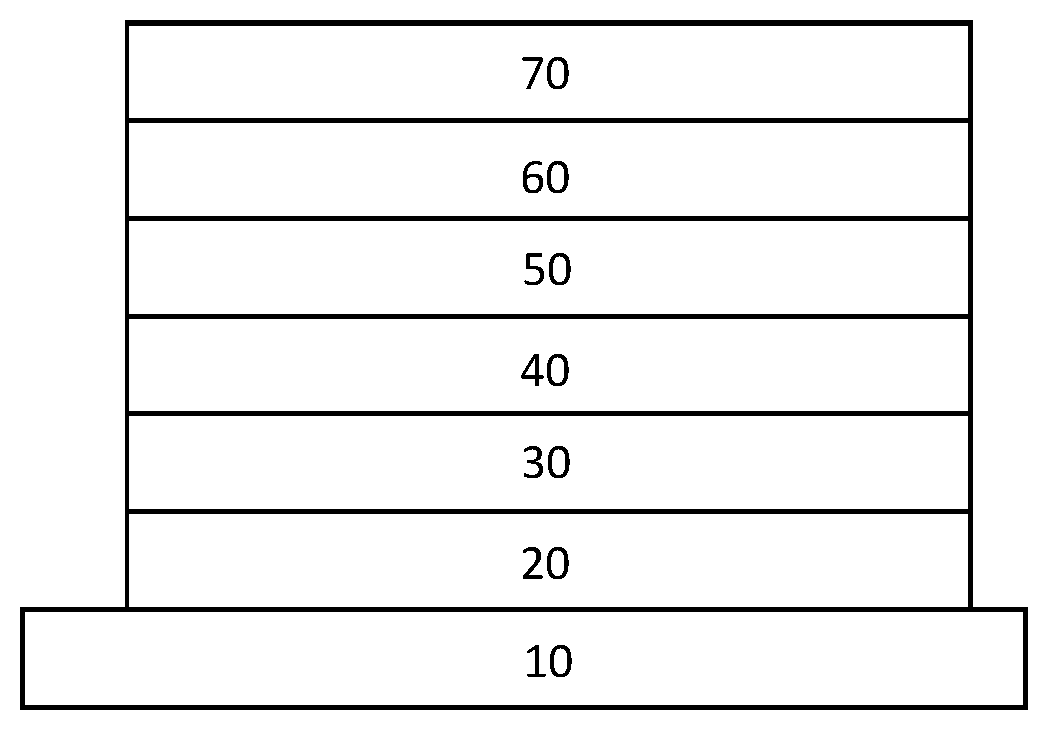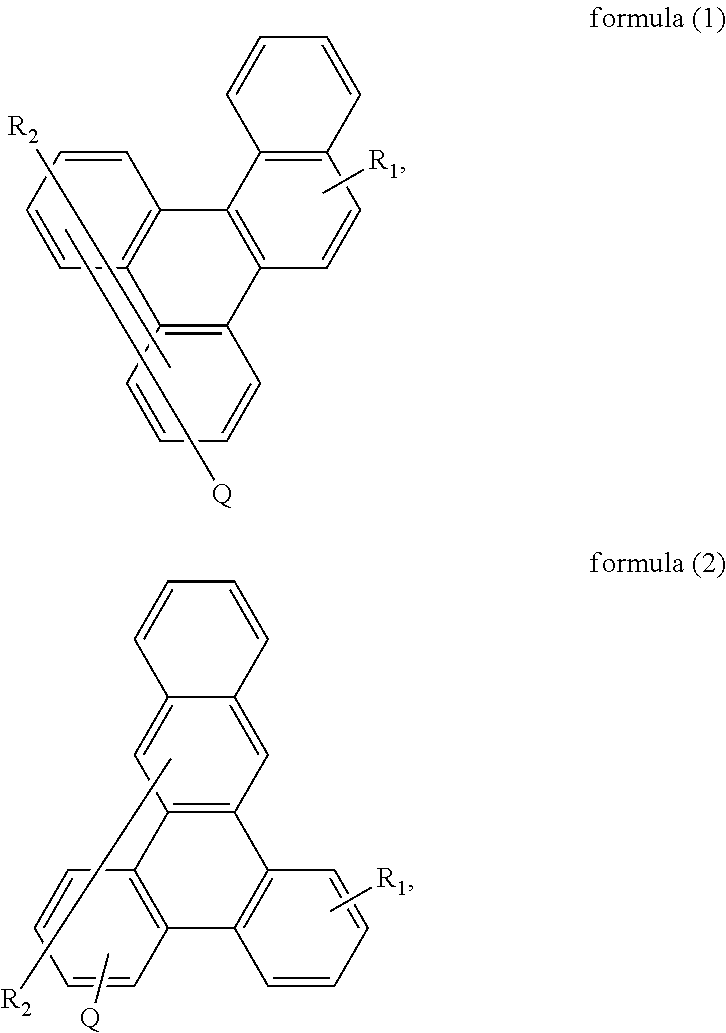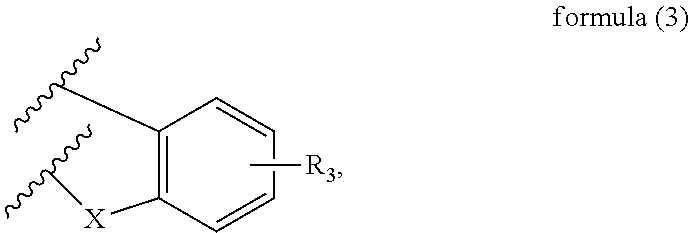Organic compound and organic electroluminescence device using the same
a technology of organic compounds and electroluminescent devices, which is applied in the direction of organic compounds, organic chemistry, chemistry apparatuses and processes, etc., can solve the problems of unsatisfactory half-life time, power consumption, luminance, current efficiency, etc., and achieve the effect of improving current efficiency, luminance, and half-life tim
- Summary
- Abstract
- Description
- Claims
- Application Information
AI Technical Summary
Benefits of technology
Problems solved by technology
Method used
Image
Examples
example 1
[0023]Synthesis of Compound C41
[0024]Synthesis of Intermediate A1
[0025]A mixture of 3 g (12.1 mmol) of 2-phenylnaphthalen-1-ylboronic acid, 4.2 g (12.1 mmol) of 2,7-dibromo-9,9-dimethyl-9H-fluorene, 0.28 g (0.24 mmol) of Pd(PPh3)4, 10 ml of 2M Na2CO3(aq), 10 ml of EtOH, and 30 ml of toluene was degassed and placed under nitrogen, and then heated at 100° C. for 6 hrs. After the reaction finished, the mixture was allowed to cool to room temperature. Subsequently, the organic layer was extracted with ethyl acetate and water, and then dried with anhydrous magnesium sulfate. After the solvent was removed, the residue was purified by column chromatography on silica to give Intermediate A1 (3.6 g, 63.1%).
[0026]Synthesis of Intermediate A2
[0027]In a 500 ml three-necked flask that had been degassed and filled with nitrogen, 5.0 g (10.5 mmol) of Intermediate A1 was dissolved in anhydrous dichloromethane (300 ml), and then 17 g (105 mmol) of Iron(III) chloride was added thereto. After stirring...
example 2
[0033]Synthesis of Compound C18
[0034]Synthesis of Compound C18
[0035]A mixture of 2.0 g (4.2 mmol) of Intermediate A2, 1.2 g (4.6 mmol) of 5-phenyl-5,10-dihydrophenazine, 0.07 g (0.08 mmol) of Pd2(dba)3, 0.04 g (0.21 mmole) of tri-tert-butylphosphine, 1.2 g (12.6 mmol) of sodium tert-butoxide, and 30 ml of toluene was degassed and placed under nitrogen gas, and then heated at 110° C. for 16 hrs. After the reaction finished, the mixture was allowed to cool to room temperature. Subsequently, the organic layer was extracted with dichloromethane and water, and then dried with anhydrous MgSO4. After the solvent was removed, the residue was purified by column chromatography on silica to give compound C18 (2.6 g, 72%). MS(m / z, EI+): 866.25.
example 3
[0036]Synthesis of Compound C37
[0037]Synthesis of Intermediate A4
[0038]The same synthesis procedure as in Synthesis of Intermediate A1 was used, except that 3.0 g of 2-(naphthalen-2-yl)phenylboronic acid was used instead of 2-phenylnaphthalen-1-ylboronic acid and 3.9 g of 2,8-dibromodibenzo[b,d]furan was used instead of 2,7-dibromo-9,9-dimethyl-9H-fluorene to obtain the desired Intermediate A4 (3.3 g, yield=61%).
[0039]Synthesis of Intermediate A5
[0040]The same synthesis procedure as in Synthesis of Intermediate A2 was used, except that 3.0 g of Intermediate A4 was used instead of Intermediate A1 to obtain the desired Intermediate A5 (1.7 g, yield=58.2%).
[0041]Synthesis of Intermediate A6
[0042]The same synthesis procedure as in Synthesis of Intermediate A3 was used, except that 3 g of Intermediate A5 was used instead of Intermediate A2 to obtain the desired Intermediate A6 (2.4 g, yield=74%).
[0043]Synthesis of Compound C37
[0044]The same synthesis procedure as in Synthesis of Compound...
PUM
| Property | Measurement | Unit |
|---|---|---|
| Electric potential / voltage | aaaaa | aaaaa |
| Electric potential / voltage | aaaaa | aaaaa |
| Electric potential / voltage | aaaaa | aaaaa |
Abstract
Description
Claims
Application Information
 Login to View More
Login to View More - R&D
- Intellectual Property
- Life Sciences
- Materials
- Tech Scout
- Unparalleled Data Quality
- Higher Quality Content
- 60% Fewer Hallucinations
Browse by: Latest US Patents, China's latest patents, Technical Efficacy Thesaurus, Application Domain, Technology Topic, Popular Technical Reports.
© 2025 PatSnap. All rights reserved.Legal|Privacy policy|Modern Slavery Act Transparency Statement|Sitemap|About US| Contact US: help@patsnap.com



